A tire inflator is a specific type of air compressor that is specialized for tires. As with air compressors, tire inflators function by converting electric energy into potential energy which is then stored as pressurized air. This pressurized gas means that there is no longer a need for the strenuous pumping of the manual tire inflators of the past.
Before we get started, here are a few important terms you’ll need to knowPSI= This stands for pounds per square inch, which refers to how much pressure your tire compressor is able to put out. For example a tire compressor with a PSI of 150 will be able to fill up a tire faster than a tire compressor with a PSI of 100.
CFM = This stands for cubic feet per minute. This is related to the PSI and refers to the speed at which the tire inflator can release air into the tire. The term SCFM occasionally is shown with regards to tire inflators, but is the same as CFM it merely states that it is the standard cubic feet per minute.
12- Volt DC = This refers to the powersource for the tire compressor being the cigarette lighter in your car.
110-Volt AC= This refers to the power source for the tire compressor being a wall socket.
Many question whether a tire inflator is a worthwhile purchase. This is definitely something to take into consideration, so here are a few reasons why you need a tire inflator.
Owning your own personal tire inflator means you do not need to go to the garage to fill up your tires. The recommended frequency for checking and filling tires is every month, and most garages require payment to use their systems. The freedom of owning your own portable tire inflator means you can safely go on road trips and more without getting stranded or needing roadside assistance.
There are many important reasons why it is vital to keep your tires at the correct PSI. It is dangerous for your tires to be under or over inflated. Having tires at the correct PSI also reduces carbon footprint, uses less fuel, improves handling and control and ensures your tires last longer. The correct PSI also reduces the risk of accidents and blow outs.
The correct PSI also reduces the risk of accidents and blow outs.
The most obvious time to use a tire inflator is when you have a flat. In many cases if the tire can still hold air a tire inflator will keep you going until you can get a repair or new tire. Additionally in many cars a pressure warning light will go on in your car. This tends to happen when the tire has lost 25% of its PSI. However it is important to check and refill your tires each month as cars tend to lose 1 PSI per month on average which is negative for the wear of the tires, fuel efficiency and more.
What to look for in your tire inflatorThere are many different tire inflators, each of them with a unique combination of features. There are several standard features that are vital for the functioning of a tire inflator as well as a few bonus features in each one.
The first vital feature is the power source. With regards to the power source, there are a few different options.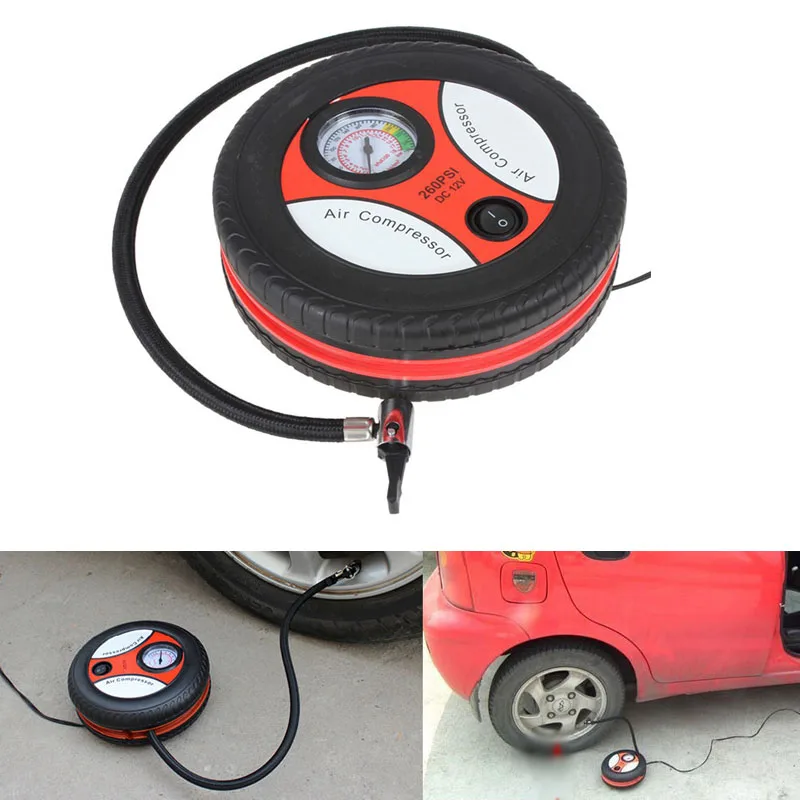 12Volt DC which plugs into your car charging port - this is probably one of the most convenient options as you can keep it in your car and use it on the go, without needing to worry about keeping the battery charged. The cordless tire inflator which runs on batteries and does not need to be plugged into a power source while functioning - this is helpful in limiting long cords and helping keep the tire inflator compact and lightweight. 110Volt AC plugs directly in the wall socket of your garage or home - this provides a high power charge often speeding up the process of inflating the tire. The final option is a multi powered tire inflator meaning there is more than one option available for powering the tire inflator.
12Volt DC which plugs into your car charging port - this is probably one of the most convenient options as you can keep it in your car and use it on the go, without needing to worry about keeping the battery charged. The cordless tire inflator which runs on batteries and does not need to be plugged into a power source while functioning - this is helpful in limiting long cords and helping keep the tire inflator compact and lightweight. 110Volt AC plugs directly in the wall socket of your garage or home - this provides a high power charge often speeding up the process of inflating the tire. The final option is a multi powered tire inflator meaning there is more than one option available for powering the tire inflator.
Inflation speed is the next feature to look at. Some tire inflators have a maximum PSI of 150. This is typically the highest in the range and means it will have the fastest inflation time in comparison to tire inflators with a PSI of 80 or 100. When deciding which PSI you want in a tire inflator, it is important to keep in mind the tires of your car, what size, how heavy duty and more.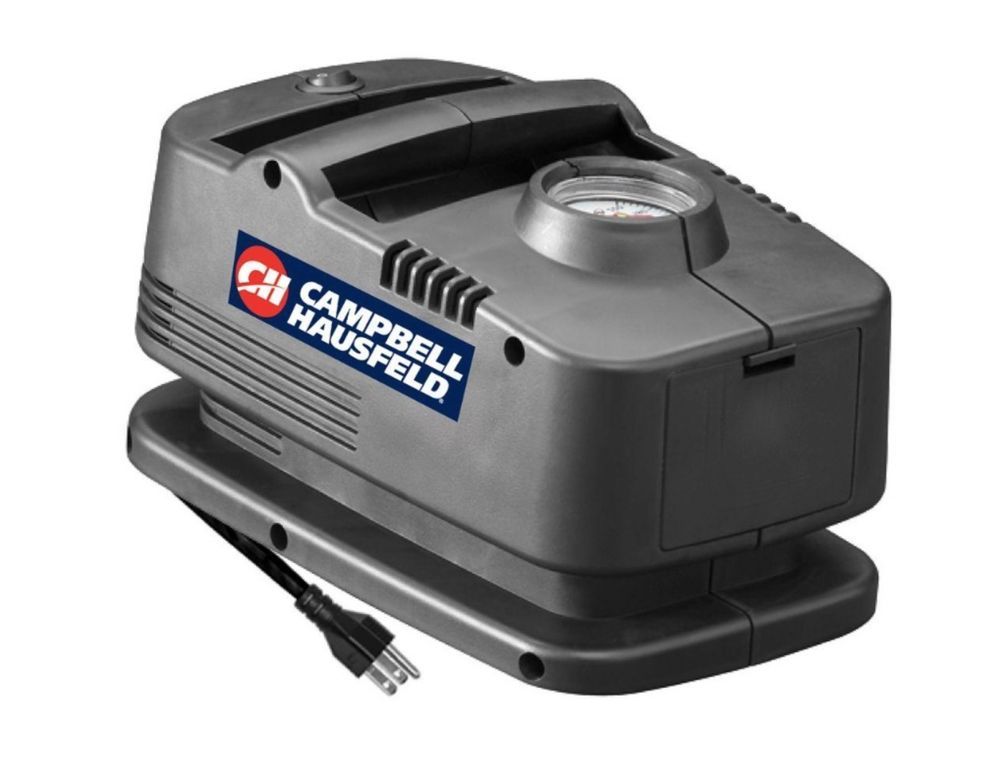 A truck, for example, cannot have its tires filled by a tire inflator that is suited for a Mini, as it would take too long and likely overpower the duty cycle of the tire inflator.
A truck, for example, cannot have its tires filled by a tire inflator that is suited for a Mini, as it would take too long and likely overpower the duty cycle of the tire inflator.
The size and weight of a tire inflator is also important to take into consideration. Most want the tire inflator to remain in the car to be used in case of emergencies as well as for the monthly refill. Therefore it is important to have a compact lightweight tire inflator to make it easier to fit the tire inflator in the car, especially when filling the trunk before going on long road trips.
Cords are the next important feature. It is helpful to have a tire inflator with a long enough cord length to reach all the tires on your car without needing to move the tire inflator. The desired length then depends on the size of your car. You also want to ensure that the cord is not too long giving the possibility of tangling and tripping unnecessarily. A bonus feature is that some tire inflators also have adaptors that allow you to inflate other household items like blow up mattresses, inflatable decorations and more. When looking at the cords it is also important to ensure that it is made from a durable material so that the lifespan of the tire inflator can be guaranteed even in the more replaceable parts such as the air hose.
When looking at the cords it is also important to ensure that it is made from a durable material so that the lifespan of the tire inflator can be guaranteed even in the more replaceable parts such as the air hose.
In addition to finding a tire inflator with the right length hose for your car, it is also important to find the correct pressure hose chuck. This is the connection from the hose to the air system valve in the tire. Some tire inflators have a screw on chuck, some have a click on chuck and others require you to hold the hose to the pipe manually if the chuck is not strong enough. Finding the correct chuck, that can allow you the freedom to use your hands and do other things while the tire inflator is functioning is beneficial to the overall experience.
Tire inflators are generally loud and noisy when operating, so another factor to take into consideration is how quiet the tire inflator is. This does not impact the ability for the tire inflator to function properly, however it does impact the comfort in the experience of using it.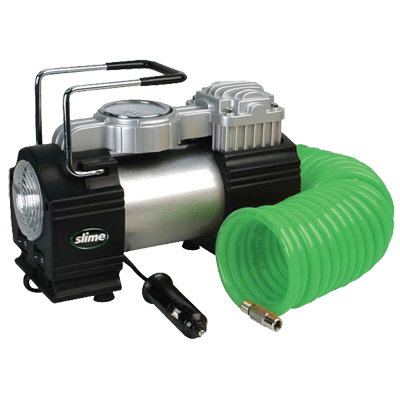
Duty cycle is also an important factor to keep in mind when looking for a tire inflator. This refers to the ability for the tire inflator to work for an extended period of time without needing to shut off to cool down. A 50% duty cycle means that the tire inflator can run for 30 minutes but then would need a 30 minute cool down, as opposed to a 100% duty cycle which can run for a full hour without needing to cool down.
Almost all tire inflators come with a pressure gauge. A tire inflator that has a built in gauge is helpful to know when to stop filling the tire. It also means you do not need to buy both a pressure gauge and a tire inflator, as you have both features in one product. It is important for this to be accurate so that you can reach the desired PSI for your tires. Not all gauges are 100% accurate so make sure to choose a tire inflator with an accurate gauge. There are two types of gauges, analog and digital. The analog looks like a clock and can often be a little harder to read, digital gauges show you a precise PSI however these can also be a little inaccurate. If the tire inflator does have a pressure gauge, ensure it is the correct reading for your tire, if the gauge can only read up to 15 PSI, a car tire that is on average 30-35 PSI will not be possible to read on the gauge. Make sure to test first and read reviews to understand the accuracy of your tire inflator’s pressure gauge.
If the tire inflator does have a pressure gauge, ensure it is the correct reading for your tire, if the gauge can only read up to 15 PSI, a car tire that is on average 30-35 PSI will not be possible to read on the gauge. Make sure to test first and read reviews to understand the accuracy of your tire inflator’s pressure gauge.
A bonus feature that is very handy is an automatic shut off. This means that the inflator will shut off as soon as it has reached the desired PSI. This means you do not need to worry about constantly checking the PSI of the tires and you are guaranteed to not over inflate the tires. This in itself can be dangerous, increasing the risk of a blow out and can cause extreme damage to the tire if the car hits any bumps or potholes in the road. Some tire inflators that have automatic shut off also have specific programs for different things which lends a natural versatility to the tire inflator while also ensuring that it does not overheat.
LED lights or work lights are another helpful feature on some tire inflators. It helps you fill your tires at night or in dark spaces as well as see under the car. Some of the lights can also function as warning lights. This is particularly useful when you need to pump your tire in the middle of the road and or at night.
It helps you fill your tires at night or in dark spaces as well as see under the car. Some of the lights can also function as warning lights. This is particularly useful when you need to pump your tire in the middle of the road and or at night.
A carrying case is another helpful bonus feature on some tire inflators. It helps you keep all the cords tucked away neatly, take the tire inflator with you should you be traveling to rent a car, and many other purposes.
Generally it is also important to look for a good build quality, comfortable easy to read gauge and easy to use design. As always it is helpful to read reviews and rankings of the best tire inflators.
How to use a tire inflatorThe first step, before even beginning to use the tire inflator, is to find out the required PSI for your car’s tires. This information can be found in the car manual, or on the car itself. Generally do not look at the tire pressure on the tire itself as that is generally the highest PSI possible, however it is not the ideal for fuel efficiency, safety and control.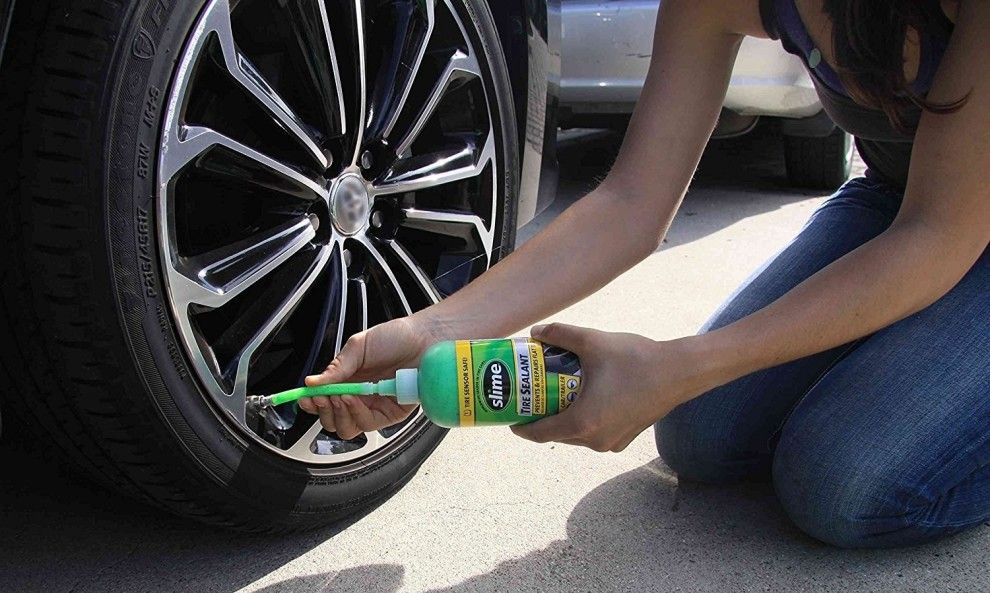 Once you know the desired pressure, make sure that the tires are cold. Tires that are warm will measure with a higher than accurate PSI, on average being around 3-5 PSI off, so make sure to take this into consideration when measuring the PSI of the tire. Then you can check the tire pressure to see how much inflation is needed. This is more relevant in tire inflators that do not have automatic shutoff as you would need to check the pressure frequently to make sure the tire reaches the correct PSI.
Once you know the desired pressure, make sure that the tires are cold. Tires that are warm will measure with a higher than accurate PSI, on average being around 3-5 PSI off, so make sure to take this into consideration when measuring the PSI of the tire. Then you can check the tire pressure to see how much inflation is needed. This is more relevant in tire inflators that do not have automatic shutoff as you would need to check the pressure frequently to make sure the tire reaches the correct PSI.
Once you have the tire inflator set up, take off the valve stem caps and ensure to keep them in a safe space. They are small and easily lost so keep track!
Connect the air pressure hose to the tire’s air valve system.
Turn on the tire inflator and wait until the desired pressure is reached. Depending on how much inflation is needed you should be able to see it working. If the tire is near flat or has lost a large percentage of the PSI you should see the inflation quickly, however if it is merely the monthly refill of 1 or so PSI, you might not see a difference.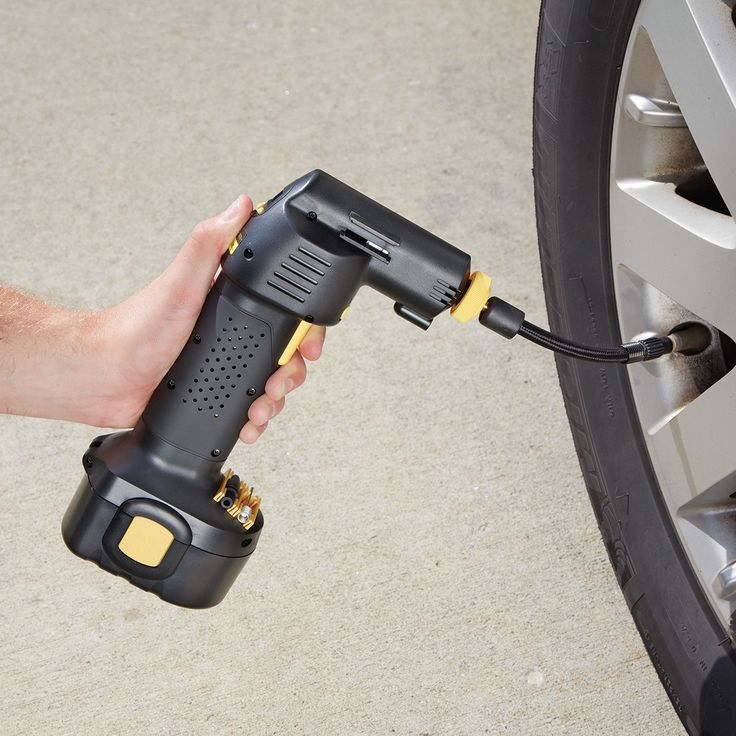
If the tire is not inflating check for punctures as you would need professional assistance to help solve that problem.
Once the correct PSI is reached reattach the valve stem caps and you are ready to drive safely.
Tire inflators are the perfect tool to help you maintain your car, have great fuel efficiency, and ensure that you can be safe on the go. A tire inflator in your car will give you peace of mind on long road trips and give you the freedom to take care of your car yourself.
If your car tires need a little air, you can always pull into the gas station to use the machine. However, you may not know how to use a gas station air pump or you might be confused about how to properly inflate your tires.
In this guide, we walk through all of the steps with you, so you can pump up the car tires properly.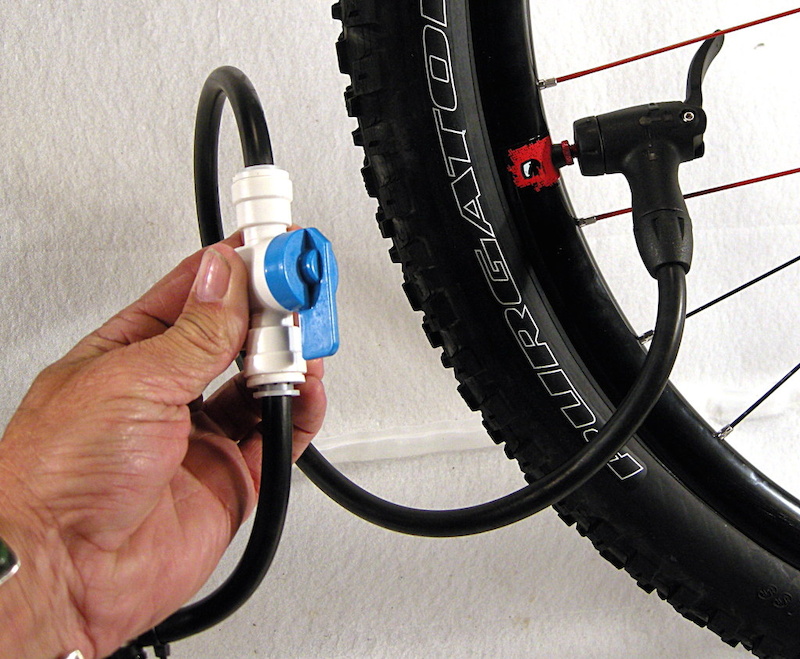 Additionally, we show you some hidden benefits of using the gas station air. We also review the benefits of maintaining proper tire air pressures.
Additionally, we show you some hidden benefits of using the gas station air. We also review the benefits of maintaining proper tire air pressures.
To use a gas station air pump, you need to find the air compressor and park near it. Once you remove the air nozzle, you can pay for the air and adjust the settings. Remove the tire valve cap and inflate the tires. Check the pressures when you are done and return the hose to its original place.
Here are more detailed steps on how to use the gas station air pump:
1. Locate Air CompressorUnless you have used the air pressure machines before, you might not know where to find them or understand what they look like. Normally, the air machines aren’t right with the gas pumps, but off to the side somewhere.
There will be a sign on the machine that indicates its purpose. You might even see something, such as “Free Air.”
2. Park Near the CompressorAfter you locate the air pump, you need to park as close as possible to it. The hose should be able to easily reach the tire or tires that need to be filled up.
The hose should be able to easily reach the tire or tires that need to be filled up.
If you park and realize you are too far away, just inch it a little closer. You can leave the car engine running to make it easier.
3. Remove Air NozzleInspect the air hose to make sure it is in decent condition. If it isn’t, you might want to choose a different machine to use.
Once you’ve approved the hose, you want to move it to where the tire is, especially if you are paying for it. You want to be ready to fill up those tires when it goes on.
4. Pay for MachineSome machines are free and you won’t have to pay anything. Other times, you will be required to enter some quarters or use your credit card to get it started.
If you don’t have quarters, you might be able to get some change from the gas station. Once the money is inserted, the air will turn on for a specified amount of time.
5. Set Appropriate PSI MarkSome machines offer settings for the PSI. You can find this number on the card mounted on the inside of the driver’s side door jamb.
You can find this number on the card mounted on the inside of the driver’s side door jamb.
This measurement shows what the tires should be inflated to. Adjust the settings to match this number. If the machine doesn’t offer this, you will need to keep a close eye on how much air is being put in the tire.
RELATED: How to Find the Correct Tire Pressure For Your Car (4 Steps)
6. Remove Tire Valve CapOnce the air hose is running, you want to remove the cap on your tire valve. Don’t misplace this tire cap or the air could leak out while you drive.
However, if you ever lose a cap or one gets broken, they aren’t expensive to replace. You can find them at most auto parts stores.
7. Inflate TirePush the end of the nozzle onto the valve stem of the tire. You will need to apply some pressure to make the fit secure.
Once you have them connected, air will flow into the tire. Once you have reached the target PSI, you remove the hose nozzle from the tire valve. If the air pump has an integrated pressure gauge, you can do both these steps at the same time and inflate, release and check the pressure.
If the air pump has an integrated pressure gauge, you can do both these steps at the same time and inflate, release and check the pressure.
You should always double-check the air pressure to ensure it is right. If the tires are still low, go ahead and put more air into them.
If you have overfilled the tires, you will need to push gently on the valve stem to remove some air. Either way, it should fall right in line with what’s on the door jamb.
9. Return Hose to MachineAfter the tires have been pumped up, you are ready to put the equipment back. Put everything in its place where it belongs, not necessarily where you found it.
It might be tempting to throw the hose on the ground, but this only ruins it for the next person. Just think about how you would feel if you needed air in a tire and the hose was destroyed because of negligence.
RELATED: How to Reset Tire Pressure Light (TPMS) – By Car Model
Benefits of Using Gas Station Air PumpThere are many reasons to consider using the gas station air pump when your vehicle tires require pumping up. For starters, you might be able to find a free air pump, meaning you won’t have to spend anything. In fact, several states require that the air pumps are free to use.
For starters, you might be able to find a free air pump, meaning you won’t have to spend anything. In fact, several states require that the air pumps are free to use.
Additionally, the gas station air pump is going to be available 24 hours a day. If you are driving home after a late night, you can still ensure that your tires are properly inflated. The gas station air pump is also quick, so you won’t be spending a lot of time waiting around.
When emergencies happen, it isn’t always convenient to drive all the way home. Plus, it might not be safe if the tires are getting low. Instead, swing in the gas station and pump them up so you don’t have to wait in line at the nearest tire center.
Why Maintain Proper Tire Pressure1. Increased Fuel Efficiency
Increased Fuel EfficiencyWhen the tires become underinflated, gas mileage gets thrown out the window. As friction increases on the road surface, you pay more to operate your vehicle.
While you might only lose a few miles per gallon, every penny counts. This is especially true when gas prices are on the rise.
RELATED: Is It Dangerous to Drive with Low Tire Pressure? (& What to Do)
2. Increased SafetyTires with excessive amounts of air inside can blow out on the road. The sudden loss of air can lead to an accident and injury.
Plus, the underinflated tire is just as dangerous. If it goes flat unexpectedly, you could be in a lot of trouble.
3. Better Handling/GripWhen the car tires are underinflated, they are more susceptible to hydroplaning. It’s easy to lose control of the vehicle when this happens.
Additionally, with the right tire pressures, you gain more traction. This added grip allows you to brake better, accelerate easier and navigate varying terrains.
Underinflated tires are going to wear out much faster than those at appropriate levels. If you want to put tires on the car less frequently, it’s important to keep them running with the right pressures.
You should check the tire pressures every month, at a minimum. Aside from this, you should double-check the pressure when the temperature drops or rises significantly. For every 10 degree change, the PSI can change by 1. Based on this, any sudden change could dramatically affect the pressure inside the tire and could put you in danger if you aren’t careful.
Was this article helpful?
YesNo
Recommendations of experts
share:
Content ,0007 9000 9000 9000 9000 9000 9000 9000 9000 9000 9000 tires
Recently, the tire inflation compressor has become more than popular among motorists.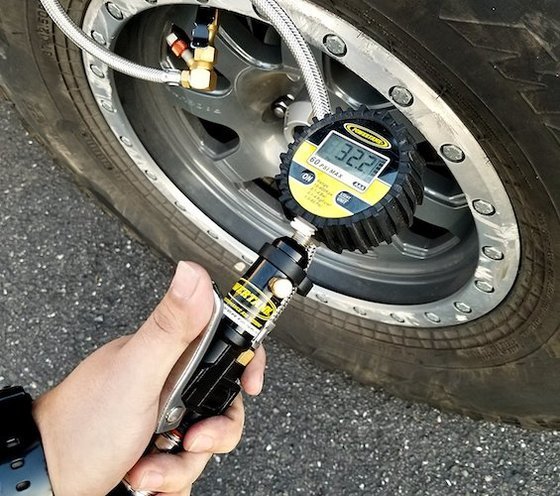 He came to replace the pump not so long ago. The main advantage of compressors is that tire inflation takes a little time, and besides, it does not require force. But it is advisable to first find out how to use the compressor correctly in order to get the most out of it and not reduce its working life.
He came to replace the pump not so long ago. The main advantage of compressors is that tire inflation takes a little time, and besides, it does not require force. But it is advisable to first find out how to use the compressor correctly in order to get the most out of it and not reduce its working life.
Compressors are piston and diaphragm. They have a different principle of operation, but they perform the same task.
Membrane ones are cheaper, but basically they are not recommended for Russian conditions, since the membrane is made of rubber, and in winter and low temperatures it cracks, letting air through. Ultimately, such an electric pump can only be thrown away. The resource of piston analogues is much larger.
In fact, using a car compressor is not at all difficult, for this you just need to know the whole process and do not forget the recommendations.
The compressor has a power cable. If this is a cheap model, then it will have a cigarette lighter socket. On more expensive devices, this wire is bifurcated, with terminals for connecting to the battery. As a result, power is increased. Of course, if we are talking about a quality battery. You can choose one at http://www.rimir.by, where a wide range of batteries is presented.
If this is a cheap model, then it will have a cigarette lighter socket. On more expensive devices, this wire is bifurcated, with terminals for connecting to the battery. As a result, power is increased. Of course, if we are talking about a quality battery. You can choose one at http://www.rimir.by, where a wide range of batteries is presented.
Also, do not forget about a very important rule of operation. It is necessary to inflate the wheels or simply check the tire pressure in a place where the conditions are the same as when the car is used.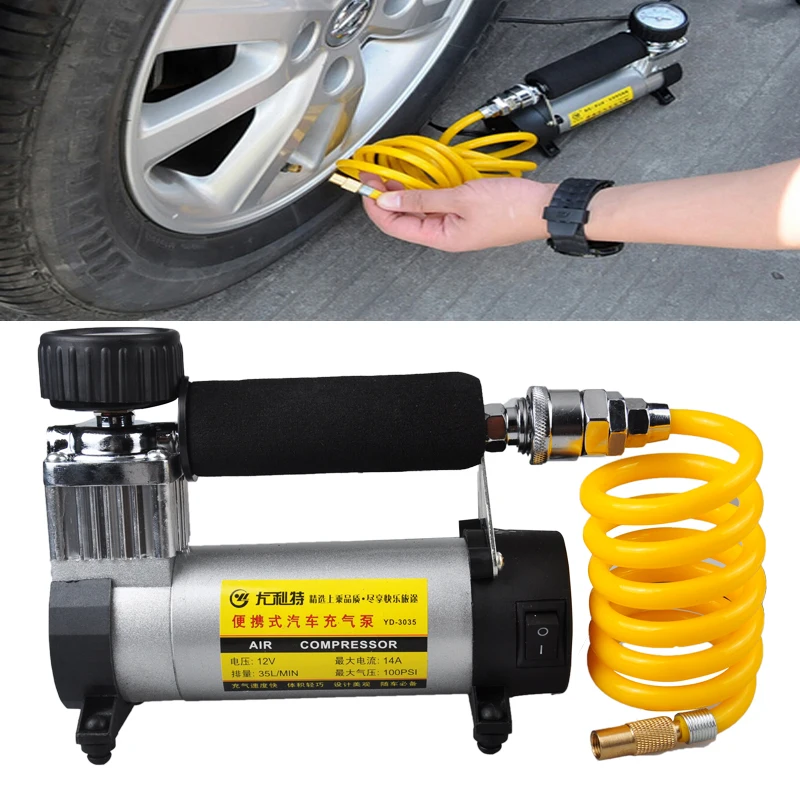 Also, the tires should not be cold after the trip.
Also, the tires should not be cold after the trip.
In order for the tires to reach normal temperature, after use, it is necessary to wait about half an hour, depending on the weather. If you do not follow this rule, then the pressure will be incorrect, and besides, it may differ in each wheel. If the wheels were pumped up in the cold, then when the temperature changes to positive, the pressure will rise, and this can lead to sad consequences.
If you have a diaphragm compressor, then you must adhere to the following recommendations:
In the cold, they can fail. As mentioned above, this is due to the fact that the rubber membrane at low temperatures begins to harden and then crack.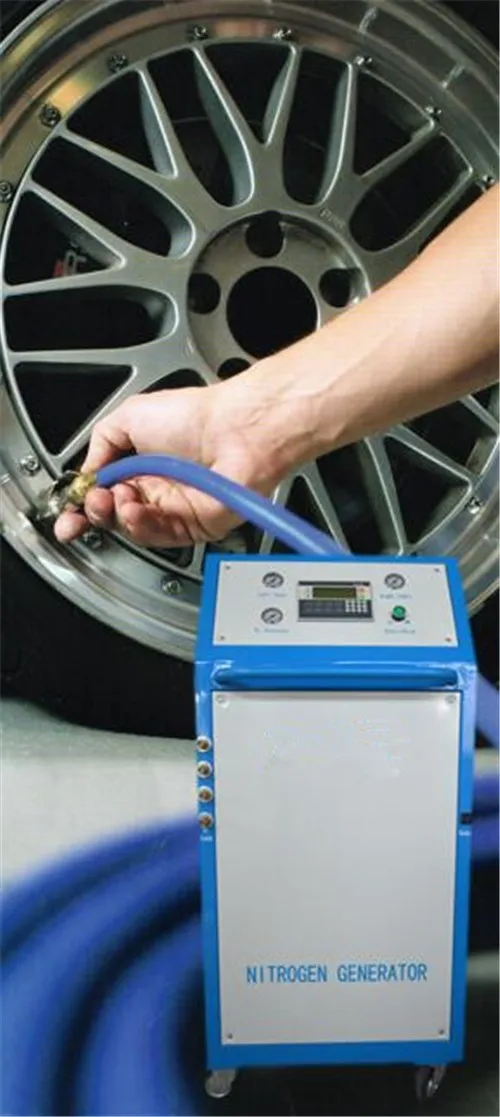 The protective layer of the wires also suffers, which is why the wires themselves close. This will eventually blow the fuse in the cigarette lighter.
The protective layer of the wires also suffers, which is why the wires themselves close. This will eventually blow the fuse in the cigarette lighter.
Piston type compressors do not have this problem. They work without problems in any conditions, both in the cold and in the heat. However, it is also impossible to operate them without interruptions, since a large load occurs due to the piston.
Conclusion
In fact, the compressor device is the simplest, so anyone can understand how it works and learn how to use it correctly. You just need to learn about the main points and listen to the recommendations, then the device will last a long time and will not cause problems.
Contents
The Tire Inflator makes it easy to check your vehicle's tire pressure and prevent under- or over-inflation. Tire pressure monitoring is especially important before a long trip to help maintain your car's traction and keep you safe and stable while driving.
Tire pressure monitoring is especially important before a long trip to help maintain your car's traction and keep you safe and stable while driving.
The tire inflator is used to monitor the pressure of your tires and adjust them if necessary. Choosing a tire inflation device at home allows you to perform this maneuver without visiting a service station, car center or car wash where there are points designed for tire inflation.
Since this is an operation that needs to be carried out every month Therefore, to ensure the safety of your car, it is very useful to have an inflator right in the garage. This frequency is valid for all vehicles regardless of how often they are used.
There are currently 4 different types of tire inflator:
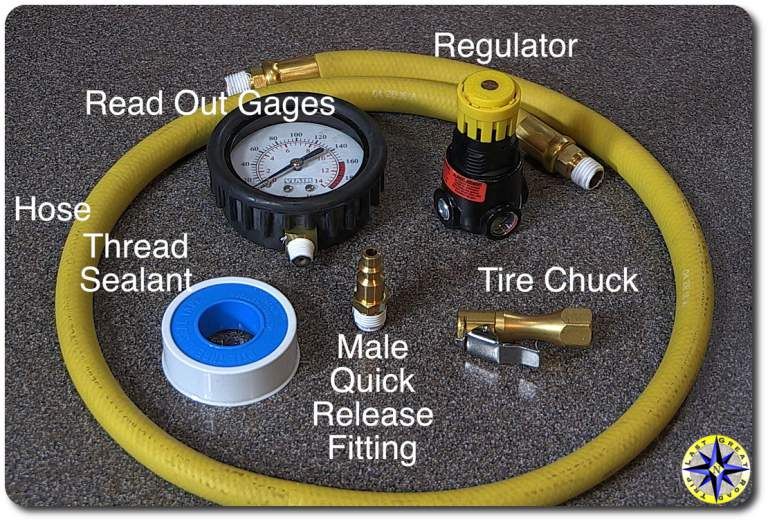 This model also has a built-in pressure gauge. For this type of model, be careful to choose a model that can handle the pressure of your tires;
This model also has a built-in pressure gauge. For this type of model, be careful to choose a model that can handle the pressure of your tires;
Tire pressure should always be measured. Cold, i.e. less than 5 kilometers. All you have to do is remove the cap from the metal valve on the tire mounted rim and attach the pump to it. When the pump is properly installed, you should not hear air hiss.
Then you need to check how you go tire pressure on the gauge. The number expressed in bars should be in accordance with your vehicle manufacturer's recommendations. These recommendations are available in the manufacturer's manual, in the glove box, on the side of the driver's door, or inside the fuel tank.
As a general rule, the pressure should be between 2 and 3 bar .
Tire inflator can be easily found in any car supplier in the store or en Ligne . It can also be purchased at hardware stores or hardware stores. Before purchasing an inflator, make sure it is compatible with your tires by making sure that:
